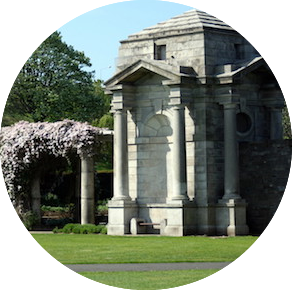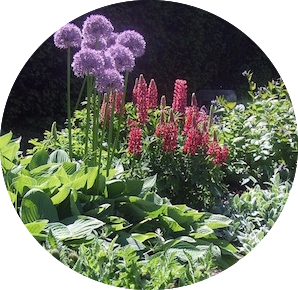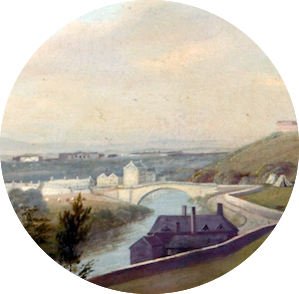Landscape
The designed landscape of the Irish National War Memorial Gardens is of national and international significance for a number of reasons. Its location as an ancient fording point of the River Liffey means that it has always occupied an important focal point in the Dublin landscape. However, its essential role as a memorial to those lost in the First World War, and particularly its authorship by the celebrated Sir Edwin Lutyens, is what it is primarily known for today. These Gardens were to become Lutyens most famous work in Ireland, and are internationally recognised as a significant example of memorial landscape architecture.
The Irish National War Memorial Gardens are divided into an informal and formal area. The formal area is located between the horseshoe road and the exterior fence, and comprises the central memorial lawn and radiating paths. The main features of this area are centred on the Stone of Remembrance. On either side of the Stone are the two fountains. These stand within a grassy lawn that is bordered by the four granite bookrooms and the enclosing wall. Looking down over the lawn is the Great Cross, standing high on stone steps. On either side of the bookroom pairs, hidden from view, are two sunken rose gardens containing around 4,000 roses, with lily ponds at their centre.

Built Heritage

Horticulture and Arboriculture

